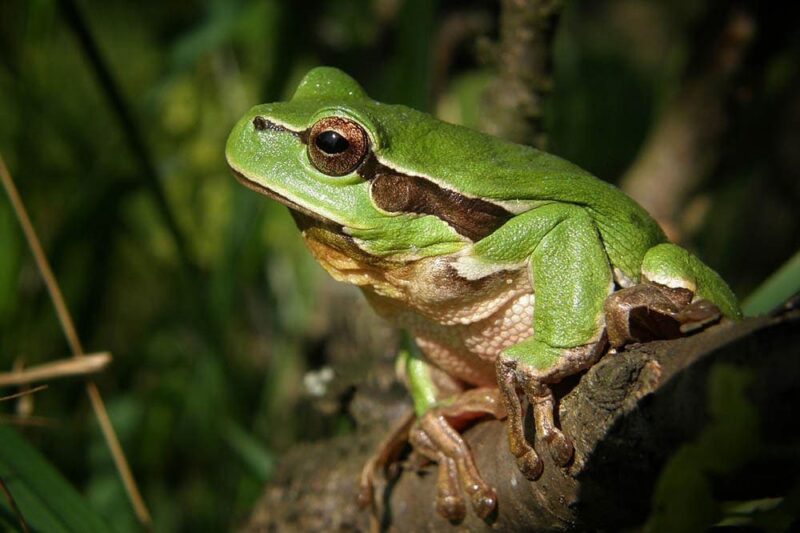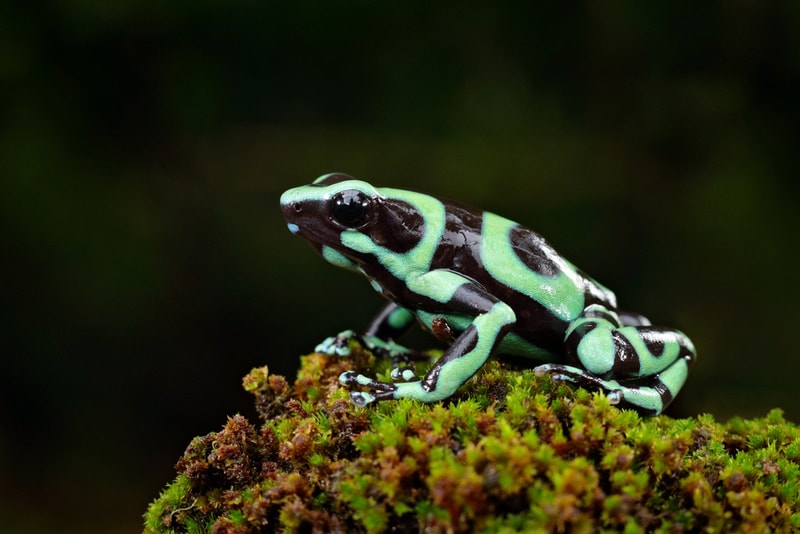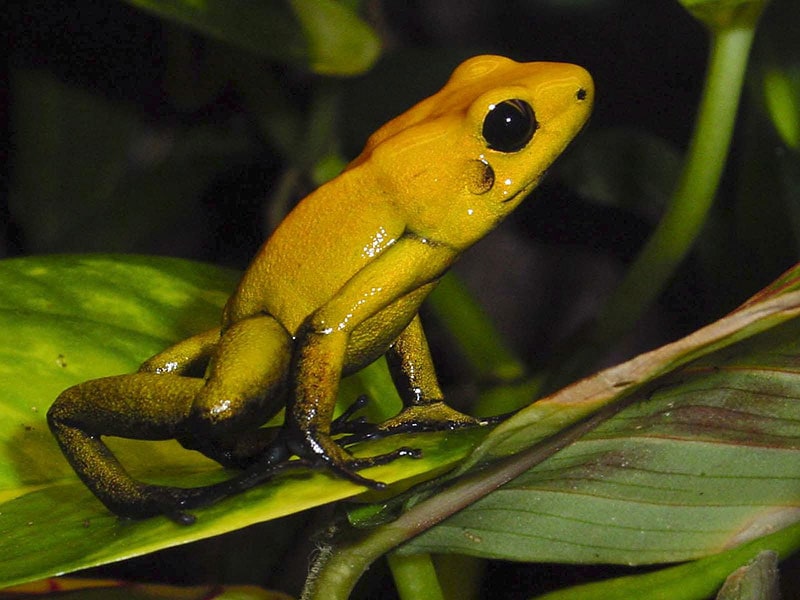Can Frogs Fart? Vet Reviewed Causes & Facts
By Ashley Bates
Updated on
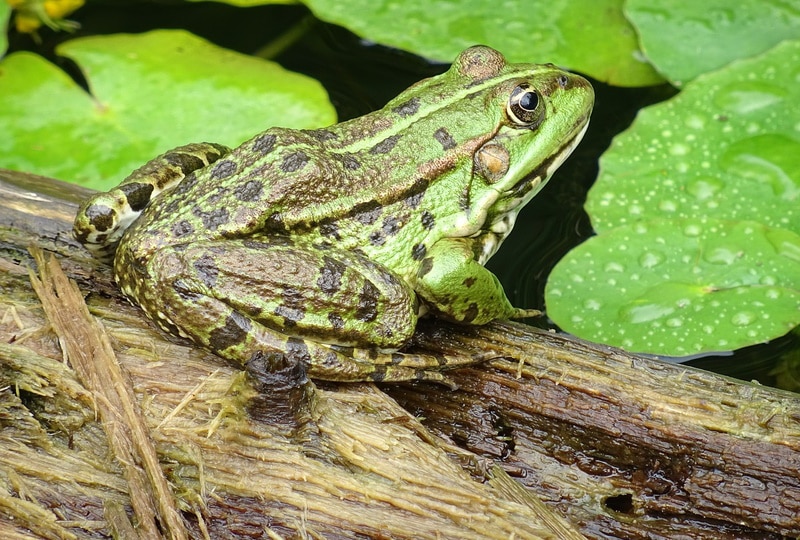
Click to Skip Ahead
When it comes to flatulence, we know that our dogs and fellow humans can clear a room. But what about frogs? These interesting amphibians have quite a different life, and are physically very different. So what does this mean for their gassy excretions?
Just like humans and many other animals, frogs can flatulate. However, due to their loose sphincter muscles, chances are you won’t hear it, and they may not even be aware of it. But you might get unlucky and sample a scent if you get too close to a large species like a bullfrog.
We know we’ve probably excited that curiosity factor a little more for you. So in this article, we’re going to discuss, you guessed it, farting frogs.
Some Frogs Can Fart
Two larger frog species that are known to fart include the Pyxicephalus adspersus (otherwise known as the African bullfrog) and the Ceratophrys (or South American Horned Frog). Not only are they capable of farting, these frogs are reported to have notoriously bad gas smells.
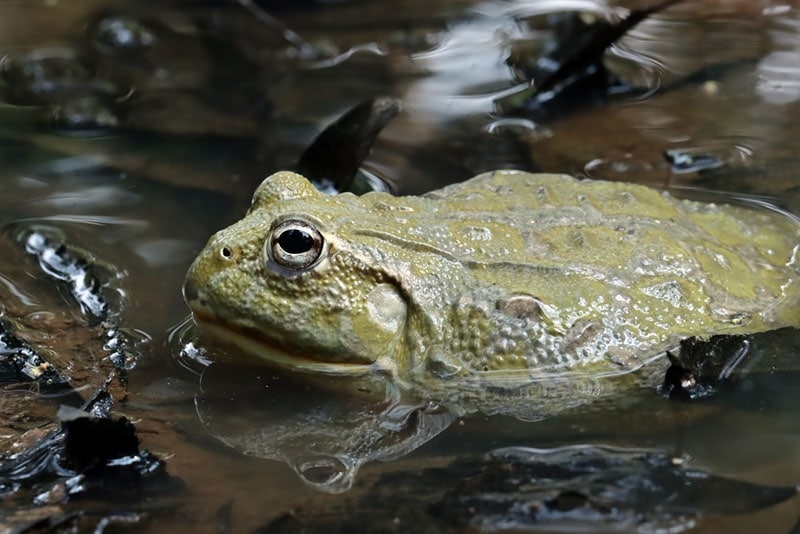
What Causes Farting?
Farting is very common, and most animals release bodily gasses from the digestive system out the back end. These gasses are formed as a by-product of digestion and some air may be swallowed when eating or drinking.
Even though a limited amount of research has been conducted on the subject, it’s likely that most, if not all, frog species let out a little fume cloud occasionally.
Other Frogs Are Flatulence-Obscure
There is no doubt that the frogs we listed above can certainly lead a toot. But many other frog species are quite modest about their gas outlets. It’s likely that most frogs pass gas without any control or effort, and it may be unnoticeable.
Do you know anything about anal sphincter muscles? These muscles allow defecation processes and flatulence to occur. Some anal sphincter muscles are quite strong, which produces more of a sound when gas is released. If sphincter muscles are not quite as strong, farting would make next to no noise.
Many frogs have weak sphincter muscles and they would only be passing small amounts of gas due to their size, neither of which help with flatulence research in the species!
So in fact, many frogs likely do fart, but it is hard to monitor because it’s difficult to know when it’s happening. As you can imagine, frog flatulence research is limited.
Other Interesting Frog Facts
So, now that you’ve obtained the little information we have on frogs, here are some other cool things you might not know!
1. Wood frogs freeze to nearly solid in the colder months.
What’s interesting about this species is that it has adapted so that as much as 60% of their body can be frozen and they can still survive! During this time wood frogs stop breathing and their heart stops beating. Their body produces a form of antifreeze that stops ice from freezing within their cells. When the weather warms up, they thaw and resume normal activities.

2. Frogs have been around since the time of dinosaurs.
Frogs are no stranger to the earth. They’ve been here for over 200 million years. A fishapod fossil was discovered in 2006, which was thought to be the long-lost missing link in the evolution of some fish from water to life on land.
3. There are over 6,000 species of frogs worldwide.
There are over 6,000 species of frogs worldwide, and those numbers just keep increasing. Scientists are constantly searching for new frogs in various habitats.

4. Frogs were the first land animals to vocalize.
Astonishingly, frogs were the very first land animals with vocal cords. They have been serenading many mornings, evenings, and nights with melodious tunes for 180 million years. Frogs don’t vocalize like us, however.
Many male frogs have vocal sacs that allow pockets of skin to fill up with air, creating a distinct noise. Frogs will close their mouth and pump air back and forth across the vocal cords to make various tones, pitches, and sounds.
5. Many boldly colored frogs are toxic.
As you may already know, if you see a brightly colored frog, steer clear! This is often a telltale sign that the amphibian in question is quite toxic. However, this isn’t true in all cases. Some very smart frogs have adopted this characteristic as a means of protection. Even if it isn’t actually toxic, if a frog appears toxic, it can ward off several unwanted predators.
For example, the Ranitomeya imitator is a frog species from the north-central region of Peru. It’s more commonly known as the mimic poison frog. It replicates the look of the poison dart frog without the toxins to back it up.
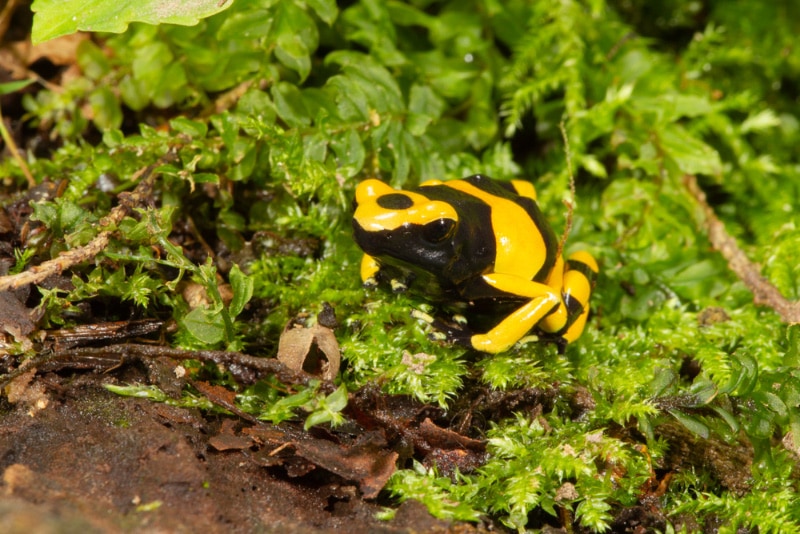
6. Toads are considered frogs.
You might be the first to recognize the difference between a toad and a frog at first glance. The two have slightly different characteristics that set them apart from one another—but did you know that technically all toads are frogs, but not all frogs are toads?
7. The biggest frog in the world is approximately the size of a newborn baby.
The biggest frog in the world—the goliath frog, dwells in the western African rainforest. These frogs get massive, with lengths up to 12 inches. These frogs can weigh as much as 7 pounds as adults, making them weigh as much as most newborn babies.
Despite how amazing these frogs are, they are sadly endangered due to hunting and habitat loss.
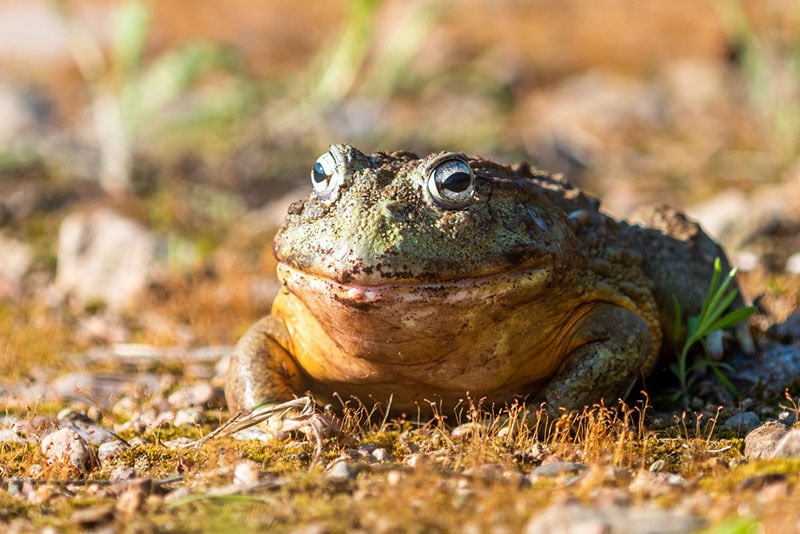
8. A few frog species have live births.
There is a frog at the Bronx Zoo that is, sadly, now completely extinct in the wild. You can stop by to see the Kihansi spray toad if you’re ever in the area. This little frog is one of the only ones that can give birth to live babies that are born as frogs, bypassing the tadpole stage.
Wildlife conservations are working diligently in Tanzania to reintroduce the species back into its natural habitat to encourage repopulation. Other live birthers include Limnonectes larvaepartus who give birth to live tadpoles.
Conclusion
Now that you’ve learned all about frog flatulence, you can tell all of your friends the details. In addition to learning that some frogs can and absolutely do fart, it’s suspected that all frog species have this ability, even if they are unaware of it due to their weak anal sphincters!
Hopefully, you have a few takeaways from this article, learning more about these impeccable amphibians. Frogs are certainly interesting, and all of the different species will awe you with their capabilities and special characteristics.
Featured Image Credit: konradsteinert, Pixabay


